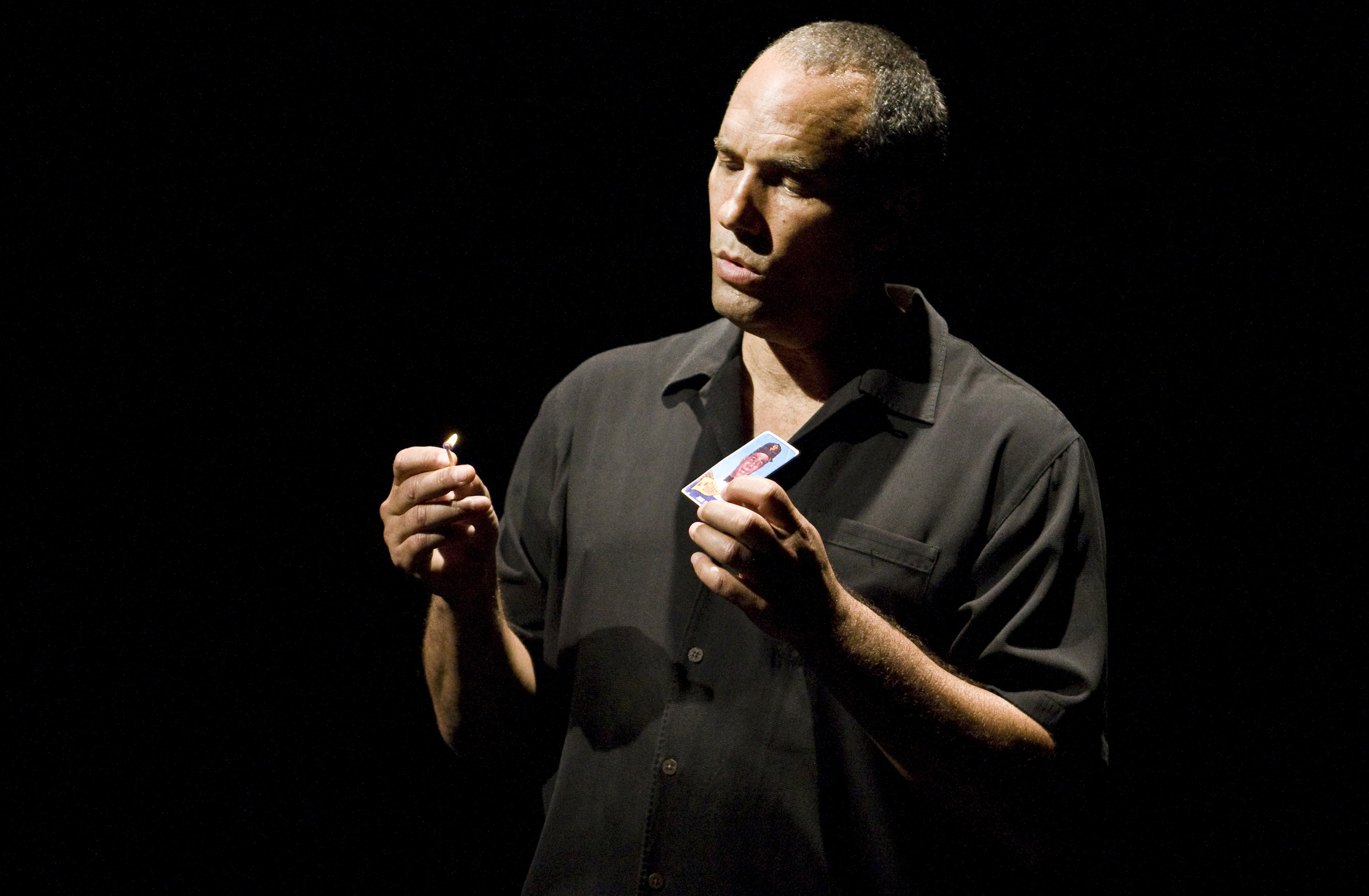“Juan and John”
Kirk Douglas Theatre
Through May 29
![]()
![]()
![]()
![]()
Correction: The original version of this article contained an error. Roger Guenveur Smith made the audience name the Dodgers’ 1965 lineup.
On Aug. 22, 1965, the Los Angeles Dodgers were playing the San Francisco Giants. Sandy Koufax threw for the Dodgers and Juan Marichal threw for the Giants. The pitching battle got dirty, and when Dodgers catcher John Roseboro dropped a pitch on purpose to subsequently graze Marichal’s ear with his throw back to the pitcher, Marichal turned around and hit him over the head with a baseball bat.
This infamous event in baseball history serves as the jumping-off point and loose focus of “Juan and John,” a one-man play created and performed by Roger Guenveur Smith, which opened on Thursday at a packed Kirk Douglas Theatre.
“Juan and John” is a play with three plots; it’s about the infamous Juan and John incident, Smith’s personal life and the development of the personal relationship between Roseboro and Marichal.
The play starts off with a scene indicative of the rest of the performance as a whole. Smith sits on a bench, looking eagerly at a screen in the distance that is actually situated above and behind him. The audience was met with a sequence of rapidly changing and brightly colored images backed up by sound that gradually increased in volume and intensity. Smith sits, staring transfixed at the images that both the audience and himself are “seeing.”
Over the course of the play, Smith dabbles in two methods of performance. One is an autobiographical narration of his reactions to the baseball incident as well as other newsworthy events which occurred around the same period, such as the Watts Riots. He also speaks about events in his personal life that occurred later, such as his divorce and the subsequent devolution of his relationship with his daughter. It is this facet of Smith’s performance which shines and sticks.
The other approach Smith used was character acting, during which he threw his voice to play both Roseboro and Marichal speaking about their experiences in the years leading up to and after the incident. Though Smith is clearly a skilled actor, it took a minute to realize he had thrown his voice and these sections tended to drag when set against the raw emotion of the more autobiographical sections of the play.
What Smith sometimes lacked in pacing he made up for with energy. This subject has clearly been his passion for years, and that almost boyish eagerness is an intangible but extremely positive aspect of the play. Smith directly interacted with the audience several times during the show, the most lengthy of which when he had the audience name the rest of the Dodgers’ 1965 lineup.
This energy was a large part of the play’s success as a counterpoint to the sparseness of the physical presentation of the performance.
Smith, dressed in all black, was on stage with little more than a bench (which was only on stage for the beginning and end of the play), a few papers Smith read from and a video screen positioned behind him, which played images and music at certain points in the play. This sparseness added to the intimacy of the play.
The one other drawback of the play was in no way a flaw in the performance itself. The audience of mostly middle-aged men and women were alive when all these events were happening ““ something a college student at the production could not say. As a result, Smith’s stories are not as immediately relevant to college students as they are to the people who lived through them, as evidenced by the standing ovation Smith received at the end of his performance.
That being said, Smith clearly made an attempt to include elements of more recent pop culture in several joking asides (at the expense of Arnold Schwarzenegger and Charlie Sheen), which served as refreshing changes of pace from the heavier subject material of the rest of the play.
Though the themes of the play may not be entirely relevant to young men and women, Smith’s exploration of anger, confusion, loss and ultimately forgiveness strikes an emotional chord with viewers, who cannot help but be drawn in by the man’s absolute devotion to the faithful retelling of his life and the events that defined it.
Email Bain at abain@media.ucla.edu.
